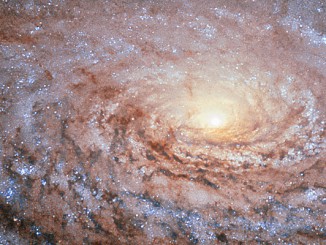
M51



See Comet Catalina pass overhead from UK when closest to Earth
Having brushed by bright star Arcturus on 1 January, Comet Catalina (C/2013 US10) continues its trek through the constellations of the far north. Now a circumpolar object for the British Isles, in the early hours of 17 January it lies between famous double star Mizar (ζ Ursae Majoris) and the Pinwheel Galaxy (M101), virtually overhead in the UK.

Space telescopes find “twins” of Eta Carinae in other galaxies
Located about 7,500 light-years away in the southern constellation of Carina, Eta Carinae outshines our Sun by 5 million times. The binary system consists of two massive stars in a tight 5.5-year orbit, shrouded in an expanding veil of gas and dust from an enormous eruption seen in the 1840s. Now a study using archival data from NASA’s Spitzer and Hubble space telescopes has found five similar objects in other galaxies for the first time.

Hubble sees a galactic sunflower
Galactic arms, sunflowers and whirlpools are only a few examples of nature’s apparent preference for spirals. A beautiful example is Messier 63, nicknamed the Sunflower Galaxy, its winding arms shining bright due to the presence of recently formed, blue–white giant stars and clusters, readily seen in this NASA/ESA Hubble Space Telescope image.
